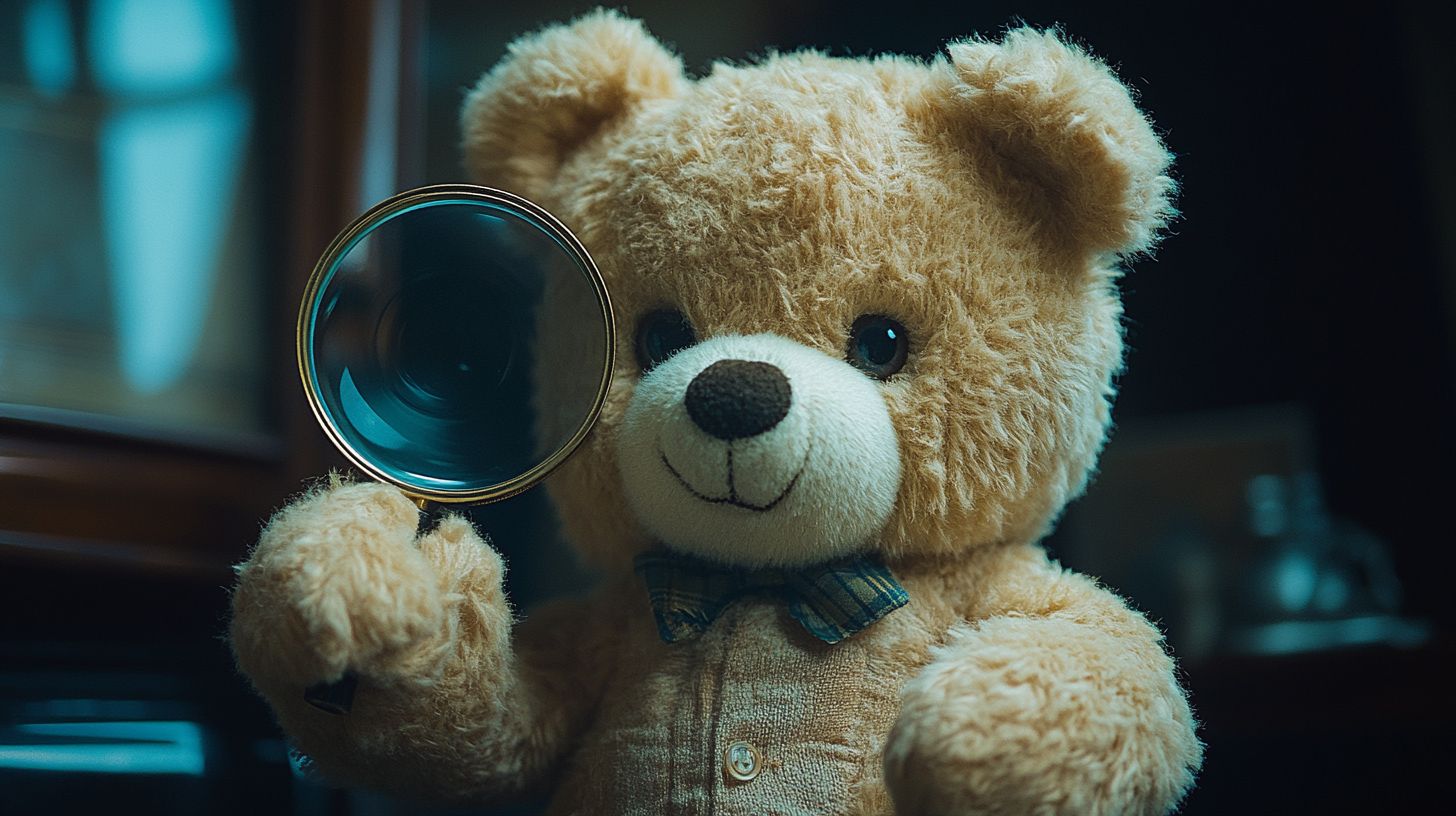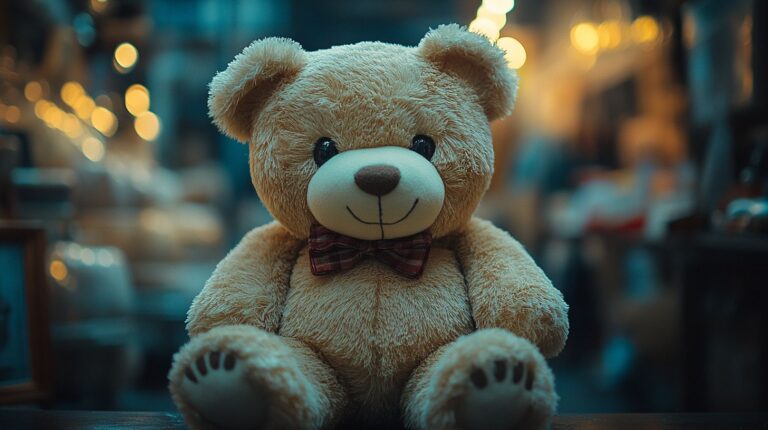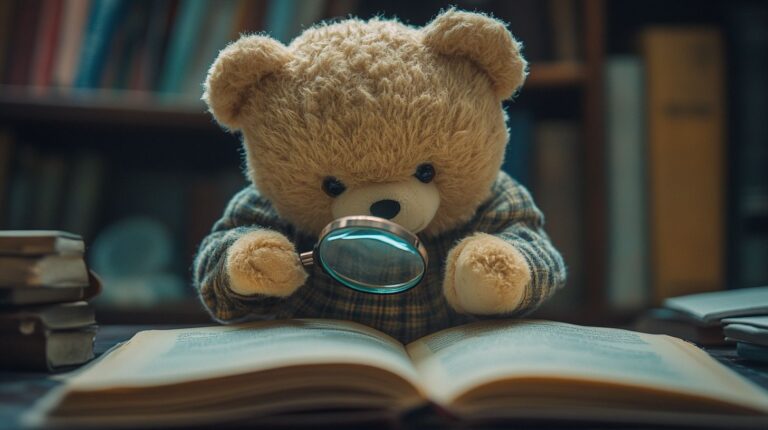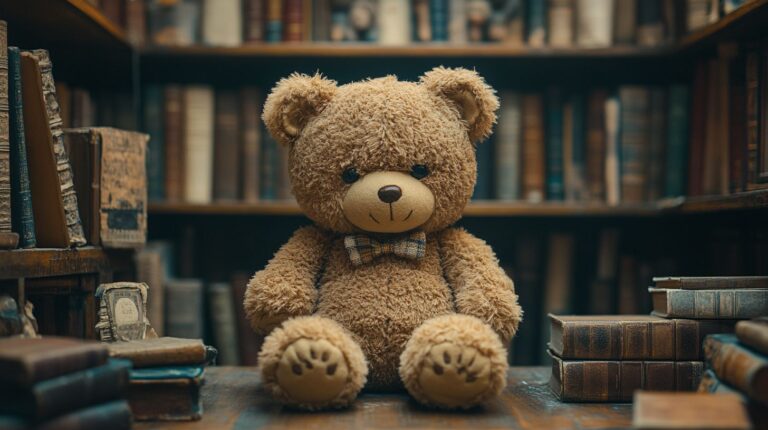When it comes to vintage teddy bears, working out their true worth can be rather tricky business. The older ones, particularly those made before 1940, tend to be absolute treasures – especially if they've got those lovely boot-button eyes and characteristic long limbs that fetch astonishing sums at prestigious auction houses.
Mind you, the maker's name counts for an awful lot. Steiff bears, with their telltale button poking through the ear, are particularly sought after, whilst Merrythought's distinctive wishbone labels have quite the following amongst serious collectors. You'll notice the truly valuable pieces often sport genuine mohair fur and proper wood wool stuffing – none of that synthetic business – along with charming hand-stitched details that simply ooze character.
Condition is absolutely crucial, though it's worth remembering that a bit of honest wear can actually help authenticate a proper antique – after all, nobody wants a bear that looks suspiciously pristine for its age. Rather intriguingly, some bears achieve astronomical values purely through their previous owners. Take Princess Margaret's old Steiff, which sold for a whopping £10,000 – quite remarkable really, but then royal provenance does tend to send prices through the roof.
Key Takeaways
When it comes to teddy bear collecting, age really does matter – particularly those gorgeous pre-1940 specimens with their characteristic long limbs and charming boot-button eyes. These older bears tend to fetch quite remarkable sums at auction houses across Britain.
The manufacturer's mark is absolutely crucial for serious collectors. Those coveted Steiff bears with their trademark button-in-ear are particularly sought after, whilst Merrythought's distinctive wishbone label has its own dedicated following amongst enthusiasts.
Rather particular about materials, the collecting community prizes mohair-covered bears above all others. Traditional wood wool stuffing is brilliant too – it's properly authentic and gives the bear that lovely, squeezable feel that modern synthetics simply can't match.
Limited editions are fascinating, especially those with their original bits and bobs intact. The numbered series bears are particularly special, though finding one with its original packaging is like striking gold. Mind you, some of the rarest bears turn up in the most unlikely places – I once spotted a valuable 1920s bear at a village jumble sale!
Whilst condition certainly influences value, don't be put off by a slightly worn bear. Those genuine signs of age and love can actually help prove authenticity. That said, major damage is rather a different story – missing limbs or severe tears can knock hundreds of pounds off the price. Best to look for bears that have been cherished rather than battered.
Age and Historical Significance

The age of a teddy bear plays a fascinating role in determining its worth, particularly for those lovely examples dating back to the early 1900s.
It's quite remarkable how bears from prestigious makers like Steiff or Merrythought can command astronomical sums at auction – we're talking thousands of pounds for the right piece. There's something rather magical about knowing your bear might've been around during momentous historical events.
Dating vintage bears isn't always straightforward, though certain telltale signs can point you in the right direction. The earlier specimens, particularly those made before 1940, tend to have distinctively long limbs, those charming boot-button eyes, and stuffing made from kapok or wood wool.
Rather intriguingly, German-made bears often sport that characteristic 'hump' behind the neck – a detail that can boost the value by £500 or more. Bears from the Second World War are particularly special, given how few were produced due to rationing and fabric shortages.
Mind you, one must be rather careful about artificial ageing. Genuine vintage bears develop their own particular pattern of wear – those well-loved paws and slightly threadbare noses tell their own stories.
The mohair should have that distinctive aged feel, whilst the stitching ought to reflect the manufacturing methods of its time. If you're ever in doubt, pop along to the V&A Museum's toy collection – their specimens are absolutely spot-on for reference.
Manufacturer and Brand Names
A Teddy's Pedigree: Makers and Their Marks
There's something rather special about discovering the maker behind a vintage teddy bear – it can mean the difference between a lovely keepsake and an absolute goldmine. Any serious collector worth their salt knows that spotting a Steiff or Merrythought isn't just showing off; these legendary manufacturers have been crafting bears since the early 1900s, and their hallmarks can turn a charity shop find into a proper treasure.
The old guard of bear-making left behind some rather clever calling cards. Steiff, perhaps the most prestigious of the lot, started popping those little metal buttons in their bears' ears back in 1904 – brilliant really, as you can't miss them.
Merrythought bears are equally distinctive, with their charming wishbone labels and those carefully hand-stitched noses that collectors go mad for. Hermann took a slightly different approach, using a rather clever coded label system that tells you exactly when each bear rolled off their workbench.
Mind you, it's not all about the posh makers – though you'd be barmy to overlook them. Some of the newer manufacturers, like Charlie Bears, are steadily building quite the following, even if their pieces haven't yet reached the eye-watering prices of vintage finds.
The trick is knowing where to look for those telltale signs of authenticity – often tucked away in seams or hiding on those little fabric labels that nobody seems to notice until it matters.
Material Quality and Composition

The material quality of teddy bears fascinates me – there's something rather special about those crafted from mohair, that lovely natural fibre from Angora goats.
Whilst the posh vintage ones sport this luxurious coating, you'll spot more modest bears wearing cotton plush or wool felt. It's quite interesting how the older bears, particularly those made before the 1930s, were stuffed with wood wool or kapok rather than today's synthetic fillings.
The pile quality – that's the raised fabric surface – tells you heaps about a bear's worth. The truly splendid specimens have this wonderfully dense, even pile that's weathered the decades brilliantly.
These beauties often fetch upwards of £500 at specialist auctions, though I'd be a bit cautious about artificial silk plush. Whilst it looks rather grand, this 1950s favourite isn't nearly as valuable as proper mohair.
Mind the joints when you're having a proper look – they're absolutely crucial. The earliest examples typically feature sturdy cardboard discs or cotton joints filled with wood wool, quite different from the plastic and metal bits you see nowadays.
And do check those paw pads – genuine felt or velveteen suggests proper craftsmanship, whilst synthetic leather's a bit of a tell-tale sign of mass production.
Rather makes the difference between a treasured collector's piece and a ordinary toy, that does.
Limited Edition Numbers
Limited edition numbers are rather fascinating when it comes to teddy bear collecting, and they're absolutely crucial for working out what your bear might be worth. Most proper limited editions come with either a tag or certificate showing numbers in the classic "X of Y" format – that's the individual bear's number followed by the total made.
It's quite interesting how certain numbers tend to catch collectors' fancy. The coveted number one bears (1/500 or 1/1000) practically fly off the shelves at auctions, whilst the final bear in any series often sparks a bidding war, though perhaps not quite as fierce.
There's also something rather special about those nice round numbers – 50, 100 and the like tend to draw more attention than their random-numbered siblings.
Naturally, the rarer the bear, the deeper collectors are willing to dig into their pockets. Take Steiff bears, for instance – a piece from a tiny run of 50 would likely fetch a small fortune compared to one from a series of 2,000.
Mind you, some manufacturers have got a bit cheeky with their definition of "limited" – churning out thousands whilst claiming exclusivity. Thank goodness for proper old-school makers like Merrythought, who still honour the true spirit of limited editions with genuinely small production numbers.
Original Tags and Packaging
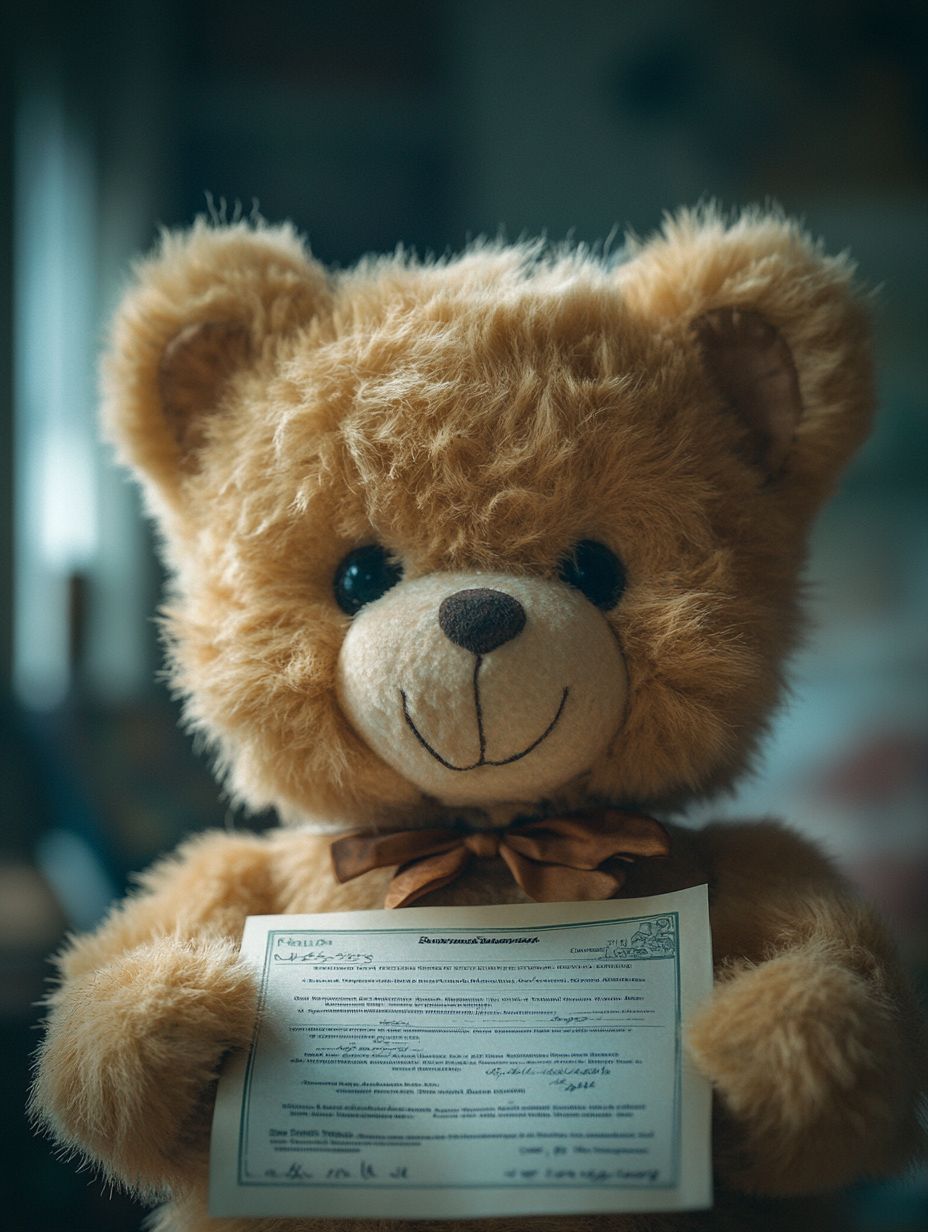
Original packaging and tags are absolute gold dust when it comes to proving a teddy bear's authenticity, especially for those coveted limited editions. Most prized collectibles arrive with their swing tags, certificates and boxes – and crikey, do they make a difference to the value!
Take Steiff bears, for instance: that little button-in-ear alone can mean the difference of several thousand quid at auction.
Proper documentation tells quite a story. You'll want to spot the maker's details, when it was made, and any special edition numbers. Mind you, the state of these bits and bobs matters enormously. A pristine box from an old Merrythought bear of the 1950s could fetch £100 by itself.
Some rather particular collectors prefer keeping their bears 'MIB' (mint in box), though plenty of others can't resist displaying their furry friends. Whatever suits, really – just remember to tuck those boxes and papers somewhere safe.
Best keep your wits about you, though. The market's got its share of dodgy copies, particularly when it comes to posh makers like Charlie Bears.
Genuine certificates typically have clever little touches – proper embossing, watermarks and such – while authentic boxes show consistently smart printing and quality materials. Rather tricky to fake those properly, thank goodness.
Condition and Preservation Status
The value of a teddy bear can skyrocket when it's in tip-top condition – we're talking three or four times the usual price for a truly pristine specimen.
Whilst examining your bear's state, you'll want to channel your inner conservator and give it a proper once-over.
Rather like the treasured pieces that pass through our British auction houses, the bears commanding premium prices are those that have gracefully aged whilst keeping their original charm.
Mind you, there are quite a few niggles that can knock the value:
- Those pesky bare patches where the fur's worn away, especially round the nose and paws
- Wobbly joints or bits that have come loose – nobody wants a bear whose arms fall off at teatime
- Previous repairs, even those done by the most skilled hands, tend to diminish value
Original stuffing is worth its weight in gold, though it's jolly rare to find a bear that hasn't had its innards replaced over the years.
Should you be fortunate enough to possess a well-preserved specimen, proper storage is absolutely crucial.
Keep the little chap away from harsh sunlight and damp corners, and do watch out for those wretched moths – they're particularly partial to vintage mohair, the blighters.
Celebrity or Event Association
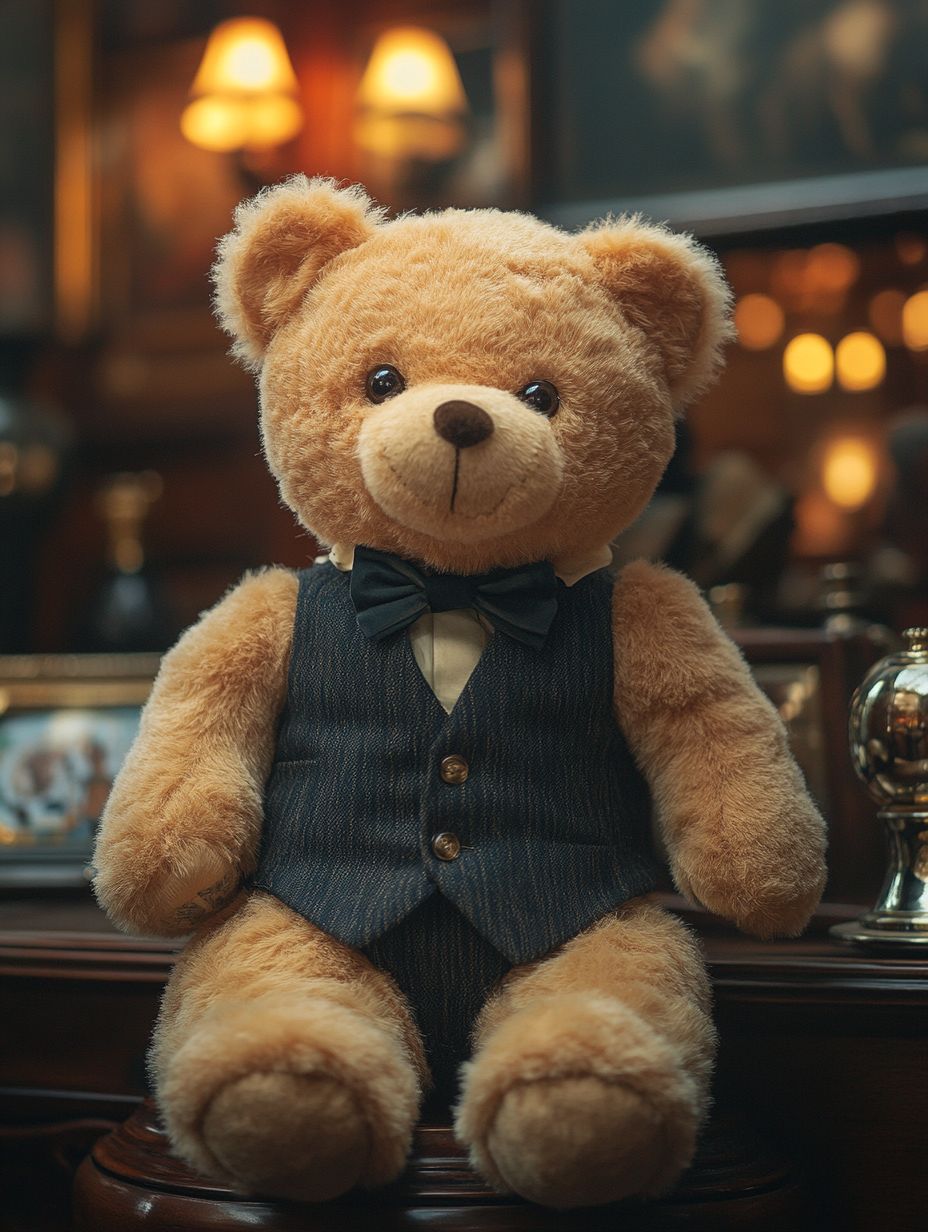
The market for celebrity-linked teddy bears is rather fascinating, with royal connections typically commanding the heftiest price tags.
Princess Margaret's cherished childhood Steiff fetched a whopping £10,000 at Christie's back in 2006 – though I'd wager it's worth considerably more now. British entertainment memorabilia holds its own too; Peter Cushing's bears have become particularly sought-after amongst collectors.
Perhaps even more intriguing are the bears tied to historic moments. The rare 1912 Steiff black mourning bears, created in remembrance of the Titanic tragedy, are absolute gold dust – when one surfaces at auction, you're looking at £25,000 or more.
More recent commemorative pieces, like the Queen's Silver Jubilee bears or those marking the 2012 London Olympics, are steadily climbing in value, albeit not quite reaching such dizzying heights.
Mind you, there's always the chance of stumbling across something special at a car boot sale – imagine finding a forgotten celebrity bear tucked away amongst the bric-a-brac.
Rather makes you want to start rummaging through those morning markets, doesn't it?
Size and Design Features
Size and Design Features
The world of teddy bears is brilliantly varied, with tiny bears no bigger than your palm often proving just as valuable as their larger cousins. Whilst most bears fall somewhere between 12 and 18 inches, it's the wee miniatures (under 4 inches) and the proper giants (over 24 inches) that tend to fetch rather impressive sums at auction.
What really sets a special bear apart, though, are those lovely finishing touches. Glass eyes that catch the light just so, properly crafted leather paw pads, and joints that move ever so smoothly – these little details can transform an ordinary teddy into something quite remarkable.
The finest specimens often sport meticulously hand-stitched noses and beautifully sculpted muzzles, features that can boost their value by £100 or more. Proper old-school manufacturing techniques make all the difference. Those double-jointed limbs with disc joints inside – rather like the ones you'd find on a classic Merrythought bear – speak volumes about quality.
And there's something particularly lovely about mohair bears, especially when clever makers use different pile lengths to create gorgeous textural effects that catch both light and attention.
Some bears have brilliant little extras – heads that swivel about or those delightful growlers that make such wonderful sounds. Mind you, whilst most shop-bought bears make do with basic fixed joints and synthetic fur, the truly special ones boast carefully finished details and premium materials.
Funnily enough, even a bear's expression can affect its worth – cheerful little chaps tend to command better prices than their grumpier relatives.
Authentication and Documentation Methods
Properly documenting your teddy bear's origins can mean the difference between a modest valuation and discovering you've got something rather special on your hands.
While receipts and certificates help establish authenticity, it's the manufacturer's stamps and labels that often tell the most compelling story.
The maker's mark remains the crucial bit – usually tucked away in a seam or stitched onto the foot pad.
Those lovely old Steiff bears are rather straightforward to spot, what with their trademark button-in-ear, whilst Merrythought opted for their charming wishbone label.
Mind you, it's worth double-checking these against proper reference materials, as there are plenty of clever reproductions about.
Getting decent photographs is absolutely essential these days.
You'll want to capture every detail – from those well-loved patches to any historical repairs.
Keeping track of who's owned your bear and any restoration work is rather important too.
For the more valuable specimens – particularly those worth upwards of £500 – it's worth getting the experts involved.
Christie's does marvellous authentication work, and the V&A's textile specialists are absolutely brilliant at what they do.
Though I must say, their waiting lists can be frightfully long.
Conclusion
Right then, delving into the world of teddy bear collecting has likely shown you these cuddly treasures pack quite a bit more value than meets the eye. Whether you're sizing up a vintage Steiff that's seen a century of love or weighing up a modern limited edition piece, proper paperwork and careful preservation make all the difference. Rather like cherished family tales passed down through generations, each bear holds its own special worth – though sometimes you need a keen eye and a dash of patience to recognise it properly.

